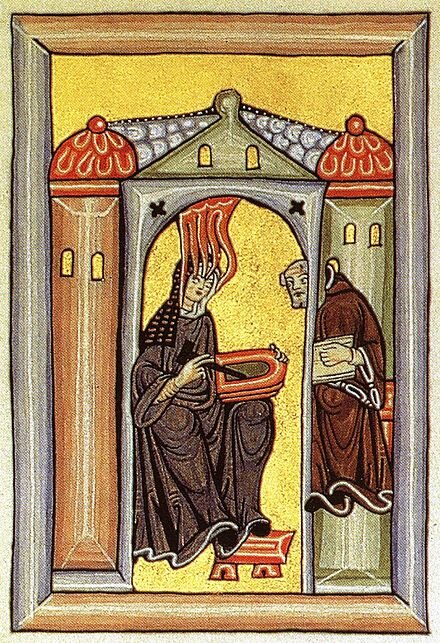Next up in Early Music Monday, a quick and dirty guide to reading neumes and chant notation! There are many different opinions on the “right” way to perform chant, but the basics of how neumes should be read are the same for all of them.
Hildegard von Bingen
In a time when women had few rights and little power, Hildegard von Bingen corresponded with popes and emperors, invented her own language, oversaw a Benedictine convent, and is considered by many to be the founder of the study of natural history in Germany. Oh, and her music is pretty awesome too…
Modes in the 16th and 17th centuries
Confused about psalm tones and modes? Our friends at Early Music Sources have an excellent video explaining why this is such a tricky topic.
Litanies de la Vierge
Last week’s Early Music Monday post was about original pronunciation. What happens when you combine original pronunciation with historically informed performance practices? This. And this is why I sing!
Original Pronunciation
Today’s Early Music Monday is all about words! Just as original pronunciation of Shakespeare’s English reveals rhymes and hidden puns and brings the language to life, playing early music with an understanding of styles and practices from that time brings the music to life and shows off details that would otherwise be missed.
Sprezzatura
An Early Music Monday post for Labor Day! Here’s the origin of the idea that a performer (athlete, actor, etc.) should “make it look easy” while doing something incredibly difficult. For an added bonus, it might help keep you alive in the always complicated royal court…
Julie d'Aubigny
17th-century swordswoman AND star of the Paris Opera? Fought duels with men in her free time (and generally won)? Early Music Monday continues! And you thought Gesualdo was the only salacious story from your music history class…
Solmization and the Guidonian Hand in the 16th century
Prepping for grad school exams and wondering how the Guidonian hand actually worked? Or solmization? Not really sure why “una nota supra la semper est canendum fa”? Early Music Sources put together a really fantastic video explaining all of that!


